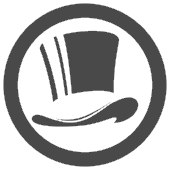CLASSROOM RESPONSE SYSTEMS (CRS)
Quick link to the UofC TopHat student guide
What is a "CLASSROOM RESPONSE SYSTEM" ?
A classroom response systems (CRS) (aka "clickers") are used to collect and collate answers from students to questions asked by an instructor during a class. Earlier versions of this technology used small portable handsets (the "clickers'). In the current generation, students are able to use other devices such as cell phones, smartphones, iPad, laptops to communicate their answers to their instructors.
Clickers were first used at U of C in Fall 2004 in Chem 201 and Chem 351 and clicker use gradually grew across Science. Since then the Schulich School of Engineering and Haskayne School of Business started using the same system in some of their courses.
CRS are used to promote active learning in the lecture and help facilitate student engagement. During lectures, questions will be asked in relation to course materials that will require that you answer by entering an answer via your device (most likely sending a text message). The answers from the class data are collected and analysed immediately. In this way, lecture content can then be adapted to respond to the immediate feedback and help student learning as well as illustrating knowledge application and problem solving.
In summer 2013, the University of Calgary recognised the importance and utility of such tools and adopted TopHat as the campus standard, making it free for students to use.

Why is the Department of
Chemistry (and the Faculty of Science in general) using Top Hat ? (previously known as Top Hat Monocle or THM)
We believe that TopHat can help envigorate the modern classroom
and lead to a better, richer learning environment. The Chemistry Dept is
alwaya been prepared to lead the way by exploring and adopting new technology. This means you will be able to use your phone or laptop or tablet to submit your answers to in class questions.
Experience shows that asking students to raise their hands in response
to questions typically only gets about a 30% response rate, on a good day. The other 70%
are either to shy to respond to the instructor and / or don't want to show
either their knowledge or lack of knowledge to their fellow students.
Since CRS is anonymous, this factor is
minimised.
In some classes, a small number of students can dominate the proceedings
by being the ones that respond to all the instructors questions.... CRS means every students answer can be
part of the response.
Many students are too passive in lectures, blindly copying notes, "multitasking" on facebook or twitter or something equally unuseful....and not
thinking about the course content. Instructors often stop to ask questions
but many students don't really try to answer them because they will not
raise their hand. Hence they are missing and therefore losing a possible
valuable learning opportunity. CRS
will be used to encourage participation by asking students to respond to
course content.
The TopHat system will be
used to collect answers to in-class questions for coursemarks. A mark for
a student will be based on the number of questions that they respond to
and how many questions they get correct. The mark created from the
use of the TopHat system will count as one assignment in the e-Learning component (see course
information sheet). In creating the e-Learning coursemark,
the worst assignment from the multiple e-homework (CAL) assignment and THM will
be dropped (i.e. best 5 of 6 will count).
TopHat allows students to :
- respond to in-class questions anonymously
- be a part of every class response
- gauge their understanding
immediately
- identify "trouble spots" in
course content
- actively participate in the
class
- gauge class understanding immediately after teaching a concept
- gauge class understanding before teaching a concept
- adapt lecture content based on identifiable needs
How do you get your TopHat account ?
- See the information in the UofC TopHat student guide